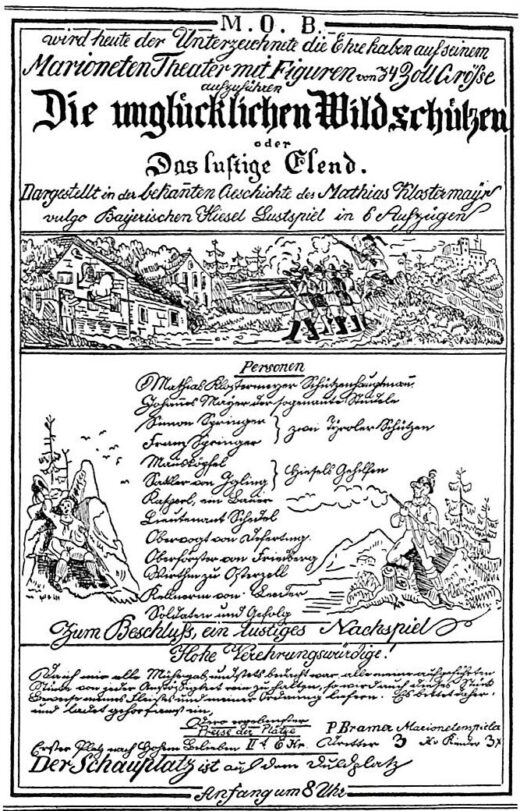
Printed
15 pages
Mathias Klostermeir
Der Bayrische Hiesel
The most frequently performed play in southern Germany in the 19th century, according to Hans Netzle, who published the present version, recounts the life of the bandit Matthias Klostermayr (1736–1771), known as “Hiesel” (Hiesel, or Hiasl, is a diminutive of the first name Matthias). He was often as the Bavarian Robin Hood. The character entered the repertoire of troupes active in Bavaria in 1783: the first puppet play is attested in 1791, twenty years after Matthias Klostermayr's execution in Dillingen. The text edited by Hans Netzle, taken from the repertoire of the Landsberg puppeteer Andreas Henggi (1823-1883), is probably the oldest surviving text for puppet theatre: it is thought to have been written down in the mid-19th century.
A big-hearted bandit
Kasperl tracks down the poacher Mathias Klostermeier, known as ‘Hiesel’ in Bavaria, whose head has been put up for a bounty. But Hiesel meets him at Leder's inn: in a predicament, Kasperl agrees to join his gang. Shortly afterwards, Hiesel kills a gamekeeper in a duel. However, Hiesel's companions plot a robbery in Derferding, despite their leader's disagreement, as he does not want to be involved in banditry: once their plan has succeeded, they must all flee to Switzerland. Meanwhile, they are attacked by Captain Schädel and his troops, who have tracked them down thanks to Kasperl's indiscretion. The poachers are sentenced to death and taken away to be executed. During the trial, Kasperl answers questions incorrectly and the curtain falls on a brawl in the courtroom.
Other titles
First performance
Publications and translations
Hans Netzle: Das Süddeutsche Wander-Marionettentheater und seine Puppenschauspiele, 1938
Hans Netzle: Das Süddeutsche Wander-Marionettentheater und seine Puppenschauspiele, Frankfurt, Puppen & Masken, 2005, 239-259